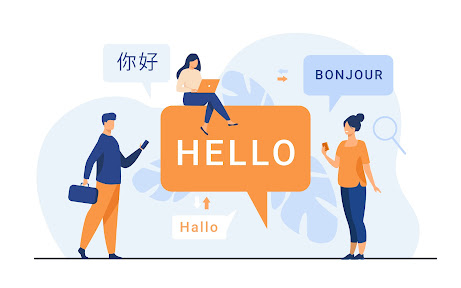4 Challenges That Affect Translation Quality
With rapid globalization, the necessity of content translation becomes apparent. Your customers located in different parts of the world won't visit a site if they can't read it. However, translation and localization are not easy. Before selecting an elearning localization and translation company for your business, you must understand the key challenges and best practices of the process.
1. Translation of idiomatic expressions
Idioms are linguistic expressions whose meaning is a lot different from the meanings of the individual words and is specific to each language or culture. These can be challenging to explain when you are ignorant of the cultural differences between the two languages.
Let's understand this by taking "A piece of cake" as an example. If the service provider opted for a literal translation of these expressions, it would be hard for the foreign public to understand the target text as well as its meaning. Such a thing makes it essential that the translator understands the exact meaning before translating the text word-by-word. Fortunately, most cultures have similar idioms for equivalents, which can be used to maintain meaning and tone in the translated version.
2. Humor is the biggest challenge in translation
Explaining humour is one of the most challenging tasks for translators since it depends significantly on a person's cultural influence. Some jokes land and others don't. It's always tricky to overcome language barriers and still be fun. Language and humour have a direct relationship with each other. This is because language and history are connected and are inseparable from the way we think and relate to each other.
3. Translation of Phrasal Verbs
The phrasal verbs are difficult to translate, especially when translated from English to other languages that do not use similar sentence formation techniques. These comprise a verb and a preposition, an adverb, or all together. All these things make it difficult for translators to recognize it at first glance. Most of the people working as translators are native speakers of the target language, so English is their second language. The challenge appears from the fact that the phrasal verb gets an entirely different meaning by adding the preposition or adverb.
4. Prefixes and suffixes
Prefixes and suffixes provide variety in English and convert verbs to nouns and nouns to adjectives. They can quickly turn into a translator's nightmare, especially when the target language is not as flexible. These groups of letters are challenging to translate, especially when the other language does not have as many options for the same concept. It is common for various languages to use prefixes and suffixes to create new words. However, everyone has different rules when it comes to preserving meanings
When you need to translate content, each text has its own challenges and requires specific language skills. Choosing the right words according to context and purpose is an art that requires years of practice. Most of the time, the translator needs context and research as well as a deep knowledge of the language pair to maintain the meaning of the original content.
DTP Labs provide elearning localization services with the force of 50+ in house specialists that allow organizations to reach and target any audience in the world.



Comments
Post a Comment